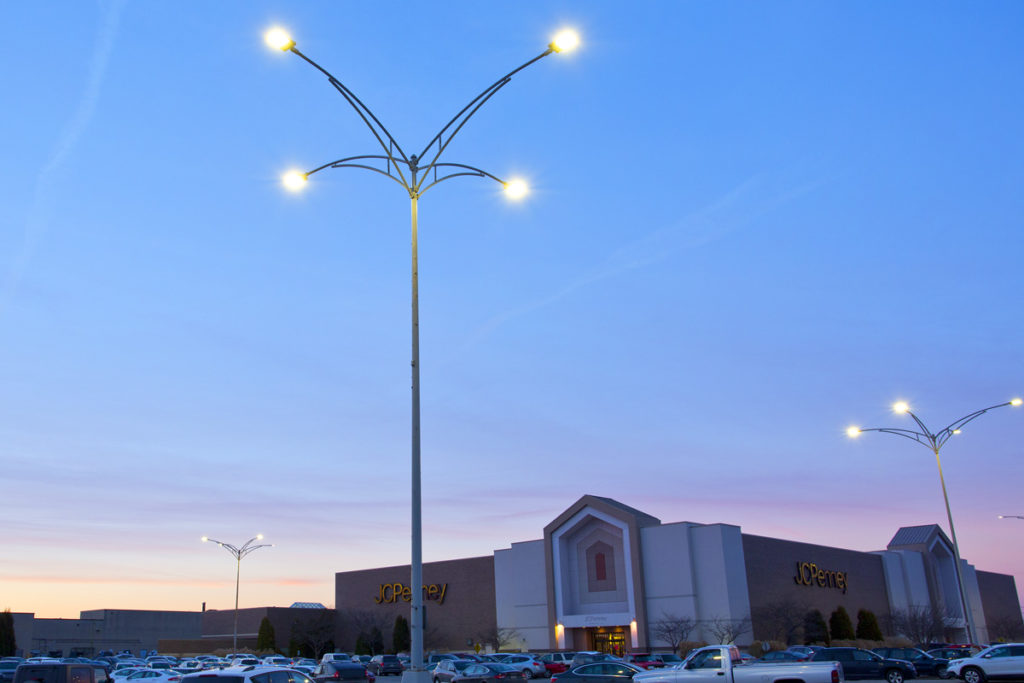
Choosing the right wattage for parking lot lights is crucial for safety, visibility, and energy efficiency. Whether you're upgrading from traditional lighting or installing new LED fixtures, understanding wattage requirements will help you make the best decision.
Understanding Wattage in Parking Lot Lights
Wattage refers to the amount of power a light fixture consumes. In the past, high-wattage metal halide, high-pressure sodium, or halogen fixtures were commonly used in parking lots, often requiring 400 to 1,000 watts per fixture. However, modern LED parking lot lights provide the same or better illumination at significantly lower wattages.
Factors That Affect Wattage Requirements
1. Lot Size and Layout: Larger lots with wider spaces between poles require higher-wattage fixtures to maintain even lighting. Smaller lots can use lower-wattage fixtures with a higher number of poles for consistent illumination.
2. Mounting Height: The higher the light pole, the more wattage you’ll need to maintain brightness. A 30-foot pole will need significantly more wattage than a 15-foot pole to provide the same level of visibility.
3. Brightness Levels (Lumens): Instead of focusing only on watts, consider lumens, which measure brightness. LED lights are more efficient, meaning they produce more lumens per watt. For reference:
- 100W LED = ~12,000–14,000 lumens
- 200W LED = ~24,000–28,000 lumens
- 300W LED = ~36,000–42,000 lumens
4. Lighting Regulations & Standards: The Illuminating Engineering Society (IES) of North America make these recommendations for the safest and most effective parking lot lights:
- General parking lots: 0.1–2 foot-candles
- High-traffic areas: 2–5 foot-candles
- Security areas: 5+ foot-candles
5. Dark Sky & Light Pollution Compliance: Consider fixtures with full cutoff optics to minimize glare and light pollution while ensuring adequate brightness in the parking area.

Recommended Wattage for LED Parking Lot Lights
When switching to LED lighting, here’s a general guide for wattage based on the height of the poles:
- 10-15 feet poles: 40W – 100W (Small lots, pedestrian areas)
- 15-20 feet poles: 100W – 150W (Medium-sized lots, general parking)
- 20-30 feet poles: 150W – 300W (Large commercial parking lots)
- 30+ feet poles: 300W+ (Highway rest stops, large industrial lots)
Why LEDs Are the Best Choice for Parking Lot Lighting
Switching to LED parking lot lights drastically reduces energy consumption. Compared to metal halide or halogen fixtures, LEDs can cut energy use by 60-80% while lasting up to 100,000 hours, reducing maintenance costs.

Energy Savings: LED vs. HID Wattage Comparison
Traditionally, HID lights like metal halide or high-pressure sodium fixtures were used in parking lots. These typically required higher wattages to produce sufficient brightness. If you replace a 1,000W metal halide fixture with a 300W LED, you save approximately 700W per fixture. For a parking lot with 50 fixtures, this equates to 35,000 watts saved per hour—a huge reduction in electricity costs. Here’s a comparison to illustrate the efficiency of LEDs:
- 250W HID: Replaced by 80-100W LED
- 400W HID: Replaced by 150-200W LED
- 1000W HID: Replaced by 300-400W LED
Switching to LED lights can significantly reduce energy consumption without sacrificing brightness, making them a smart investment.
Choosing the Right Wattage for Your Parking Lot Light
When choosing wattage for parking lot lights, consider pole height, lot size, brightness needs, and efficiency. In most cases, 100W to 300W LEDs provide optimal lighting while saving energy and reducing maintenance. By upgrading to LED technology, businesses and municipalities can enhance safety while lowering costs.
 Need help selecting the right wattage for your parking lot lights? Contact us today for expert guidance!
Need help selecting the right wattage for your parking lot lights? Contact us today for expert guidance!


